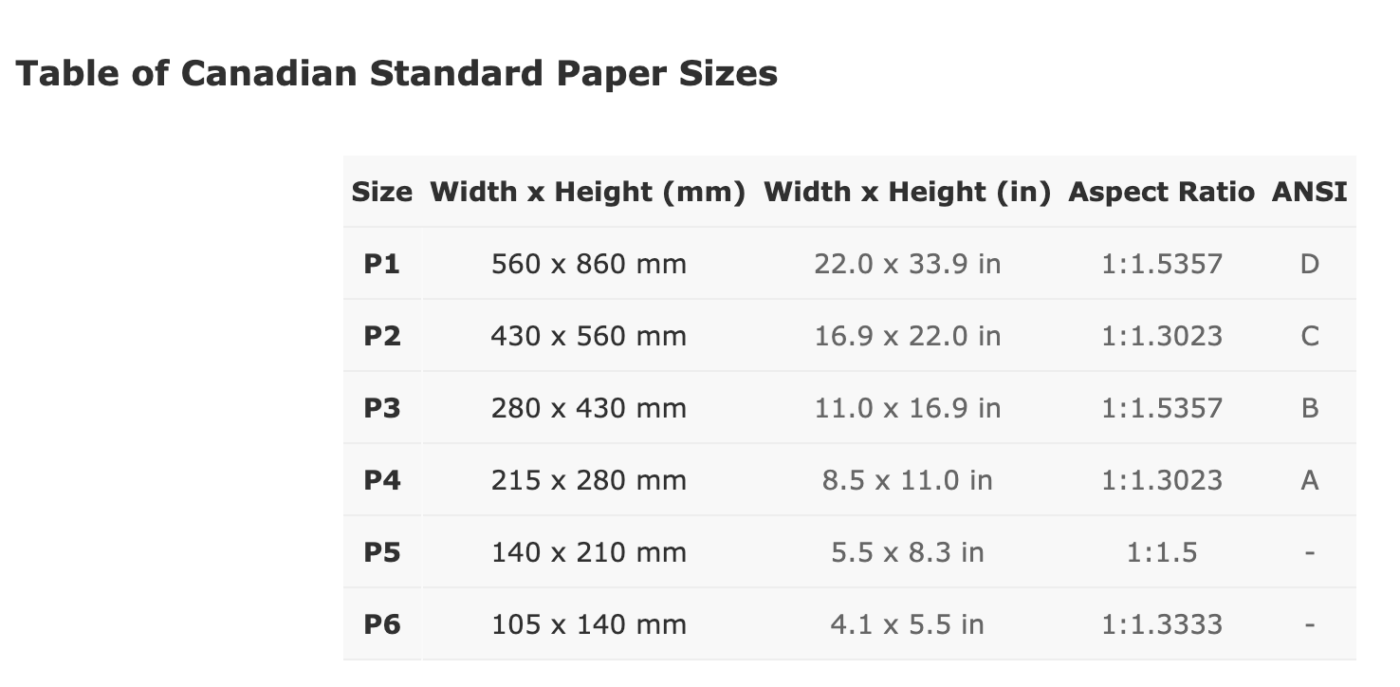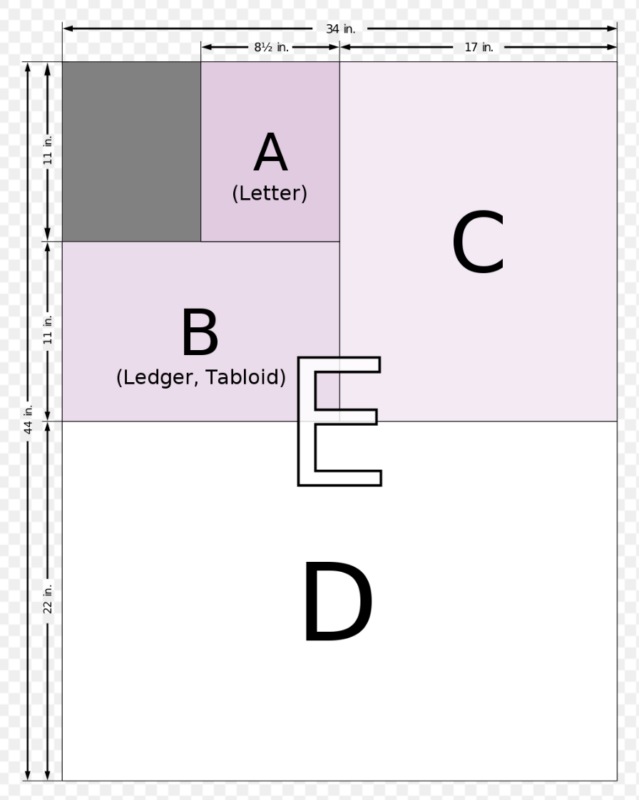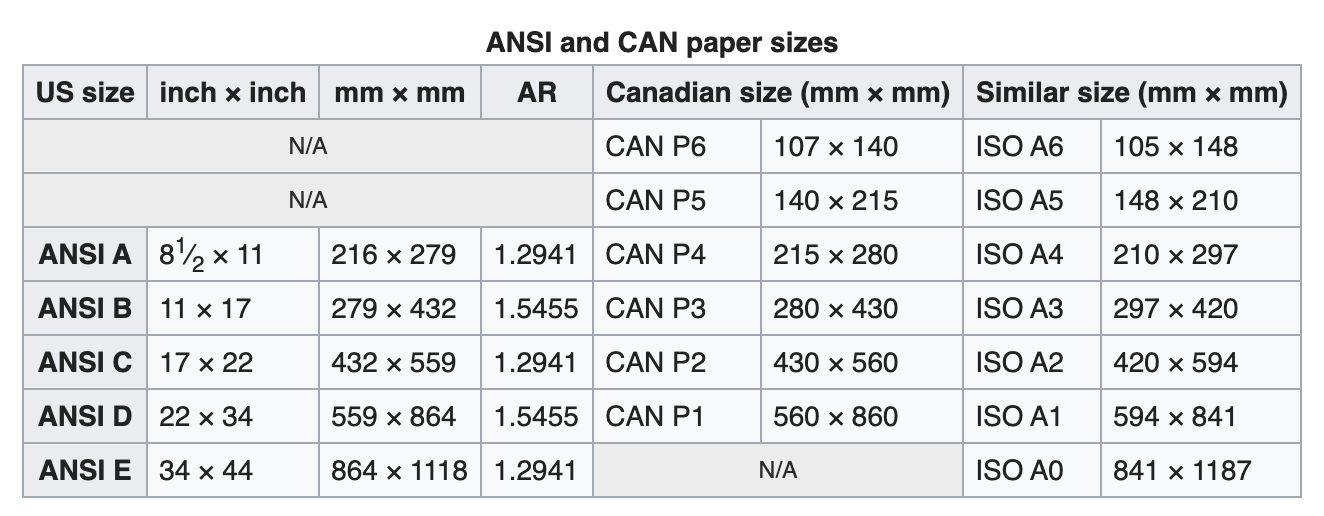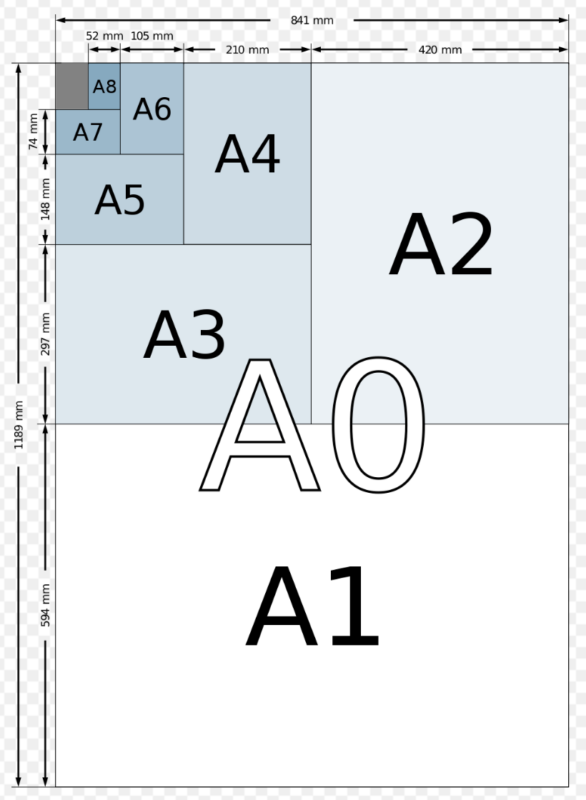As a graphics designer of a lot of different print media, I come across a lot of sizes of media and names for these sizes. For example, when I say “hand me a piece of letter-size paper” you would probably reach for a piece of paper that was 8.5″x11″ or 22 x 28 cm. How about Tabloid, what size of paper would you look for?
Although most countries use the Metric System, which uses the measuring units such as meters and grams and adds prefixes like kilo, milli and centi to count orders of magnitude, in printing we still use the imperial system when referring to sizes of paper or even sign/banner media. In the United States, they use the older Imperial system, where things are measured in feet, inches, and pounds. However in printing and in Canada many if not most still use inches. For example, When I order a large sign I would order a 4’x8′ sign which is Imperial and not in centimeters or meters.
Size is not only expressed in the term in Metric or Imperial other factors ways such as Tabloid or A6. Many paper size standards conventions have existed at different times and in different countries. Today, the A and B series of ISO 216, which includes the commonly used A4 size, are the international standard used by almost every country. However, in some countries in the USA as well as in the Philippines, the North American series of paper sizes such as ‘Letter’ and ‘Legal’ is more prevalent. Paper sizes affect writing paper, stationery, cards, and some printed documents. The international standard for envelopes is the C Series ISO 269
Canadian Paper Sizes
Canada adopted the ISO paper sizes in 1972. However as the use of US paper sizes is common across North America, the Standards Council of Canada introduced metric versions of the US ANSI sizes in 1976 with the Paper Sizes For Correspondance CAN 2-9.60M Standard.
CAN 2-9.60M created the P series of paper sizes P1 to P6 that are the ANSI A,B,C and D paper sizes rounded to the nearest 5mm with the addition of two extra sizes smaller than ANSI A. It appears that these sizes are now obsolete.
Unlike the ISO standard sizes which have the single aspect ratio of 1:root2, the Canadian P series sizes have a number of different aspect ratios, thus enlarging and reducing between the sizes is not as easy as with the ISO sizes. These sizes are also sometimes referred to as PA1, PA2 and so on.

Standardized American paper sizes
In 1996, the American National Standards Institute adopted ANSI/ASME Y14.1 which defined a regular series of paper sizes based upon the de facto standard 8 1⁄2 in × 11 in (220 mm × 280 mm) Letter size which it assigned “ANSI A”, intended for technical drawings, hence sometimes labeled “Engineering”. This series is somewhat similar to the ISO standard in that cutting a sheet in half would produce two sheets of the next smaller size and therefore also includes Ledger/Tabloid[17] as “ANSI B”. Unlike the ISO standard, however, the arbitrary base sides forces this series to have two alternating aspect ratios. For example, ANSI A is less elongated than A4, while ANSI B is more elongated than A3.

The Canadian standard CAN2 9.60-M76 and its successor CAN/CGSB 9.60-94 “Paper Sizes for Correspondence” specified paper sizes P1 through P6, which are the ANSI paper sizes rounded to the nearest 5 mm.[23] All custom Canadian paper size standards were withdrawn in 2012 and the respective ISO standards took their places.[24]
With care, documents can be prepared so that the text and images fit on either ANSI or their equivalent ISO sheets at 1:1 reproduction scale.


